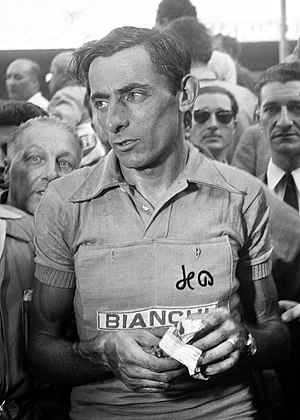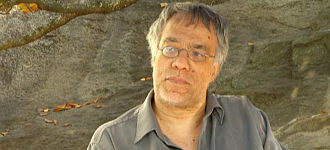Discover Your Roots
SIGN UPDiscover Your Roots
SIGN UPFausto is a male name of Spanish origin, meaning "Lucky." It is used as a given name and surname. The name has a rich history and has been associated with various notable individuals in different fields such as sports, music, film, and literature. In addition to its meaning, Fausto has been prominently featured in operas, films, and literature. Some famous individuals with the name include Fausto Coppi, a renowned Italian racing cyclist, and Fausto Elhuyar, a prominent Spanish chemist. The name also appears as a surname, with individuals like Boris Fausto, a distinguished Brazilian historian, and Vettor Fausto, a Venetian humanist and naval architect. The name Fausto has a strong and positive connotation, symbolizing luck and good fortune.

Angelo Fausto Coppi, born on September 15, 1919, was an iconic Italian cyclist who rose to prominence as the dominant international cyclist in the post-World War II years. Renowned as Il Campionissimo, or the "Champion of Champions," Coppi was a versatile racer, excelling in climbing, time trialing, and sprinting. His illustrious career boasts numerous victories including five Giro d'Italia titles, two Tour de France wins, and a World Championship triumph. Coppi's exceptional talent and determination were evident from a young age, as he overcame health challenges and left school at 13 to pursue his passion for cycling. His uncle's generous gift of 600 lire enabled Coppi to acquire a custom-built bike, marking the beginning of his remarkable journey in competitive cycling. Following his debut race victory at the age of 15, Coppi's career soared to new heights, with notable achievements such as setting the hour record in 1942. Despite the interruption caused by his service in World War II, Coppi made a triumphant return to the sport in 1946, achieving unprecedented success. His enduring legacy cements his status as one of cycling's most legendary figures, leaving an indelible mark on the sport's history.

Fausto Borel Cardoso, professionally known as Fausto Fawcett, is a versatile Brazilian artist renowned for his contributions to music, literature, theater, and cinema. Born on May 10, 1957, in Rio de Janeiro, Fawcett is celebrated for his pioneering work in rap rock and cyberpunk literature in Brazil. His musical career took off in 1986 with the release of his debut album, "Fausto Fawcett e os Robôs Efêmeros," featuring the iconic song "Kátia Flávia, a Godiva do Irajá." Fawcett's literary endeavors have also garnered acclaim, with the publication of several novels and short story anthologies. Notably, his books have served as inspiration for his musical creations, showcasing his multidisciplinary talents. Fawcett's creative prowess extends to the silver screen, where he has ventured into acting and screenwriting. A pop culture enthusiast with diverse influences, Fawcett has left an indelible mark on Brazil's artistic landscape. Through his collaborations with notable musicians and his foray into filmmaking, Fawcett continues to captivate audiences with his innovative and multifaceted artistic expressions.

Fausto Paravidino, born on June 15, 1976, is a versatile Italian figure known for his work as a dramatist, director, actor, and screenwriter. Hailing from Genoa and spending his early years in Rocca Grimalda, Alessandria, Paravidino embarked on his professional journey at a young age, making his mark with the company "La Soffitta" in 1990. His talent was further recognized through works like "Trinciapollo" in 1996, "Gabriele" and "Due Fratelli" in 1998, and "Peanuts" in 2000, which was showcased at the Royal Court Theatre. Paravidino's creative prowess also extended to the film industry, with his directorial debut "Texas" earning him accolades at the 62nd Venice Film Festival. Notably, his play "Natura morta in un fosso" received the prestigious Vittorio Gassman Prize in 2004. With an impressive repertoire, Paravidino also made his mark internationally, becoming the eighth Italian author to be featured at the esteemed Comédie-Française in Paris. His contributions have been well-received, with adaptations of his works showcased in various theaters, including the Schaubühne am Lehniner Platz. For those interested in delving deeper, Alessandro Tinterri's edited work "Fausto Paravidino" offers further insights

Fausto Cruzat y Góngora, a Spanish Governor-General of the Philippines from 1690 to 1701, is renowned as one of the most capable Spanish colonial officials of his time. Born into a distinguished family in Pamplona, he excelled as a soldier and a knight of the Order of Santiago. Upon assuming control in the Philippines, Cruzat initiated significant administrative reforms, streamlined taxation, settled debts, and improved the islands' self-sufficiency. He also oversaw the reconstruction of the Palacio del Gobernador in Manila and issued new governance rules to ensure strict adherence to royal authority and prevent corruption. Cruzat faced challenges within the Roman Catholic Church, including disputes over control of parishes and the regularization of land property titles. Despite these complexities, he displayed adept diplomacy and governance. After his tenure, he was succeeded by Domingo Zabálburu de Echevarrí and passed away on 14 June 1702 aboard the Acapulco galleon. His legacy extended through his descendants, notably his son Juan Cruzat y Góngora, who was later made Marques de Góngora, and his grandson Gervasio Cruzat y Góngora, who became governor of New Mexico.

Fausto Ricci, born on March 13, 1961, is a renowned Italian former Grand Prix motorcycle road racer. His most successful year came in 1985, where he achieved a remarkable fifth-place finish in the 250cc world championship. Notably, he secured his first Grand Prix victory at the 1984 250cc Nations Grand Prix hosted in Misano. Despite this early triumph, Ricci's career unfortunately did not see him clinch another race win. His contributions to the world of motorcycle racing have left an indelible mark, solidifying his legacy as a talented and dedicated athlete in the sport.
All images displayed on this page are sourced from Wikipedia or Wikimedia Commons.We use these images under their respective Creative Commons or public domain licenses. Wherever applicable, author attributions and license information are provided. If you believe an image is used incorrectly or outside its license terms, please contact us so that we can review and correct the issue.